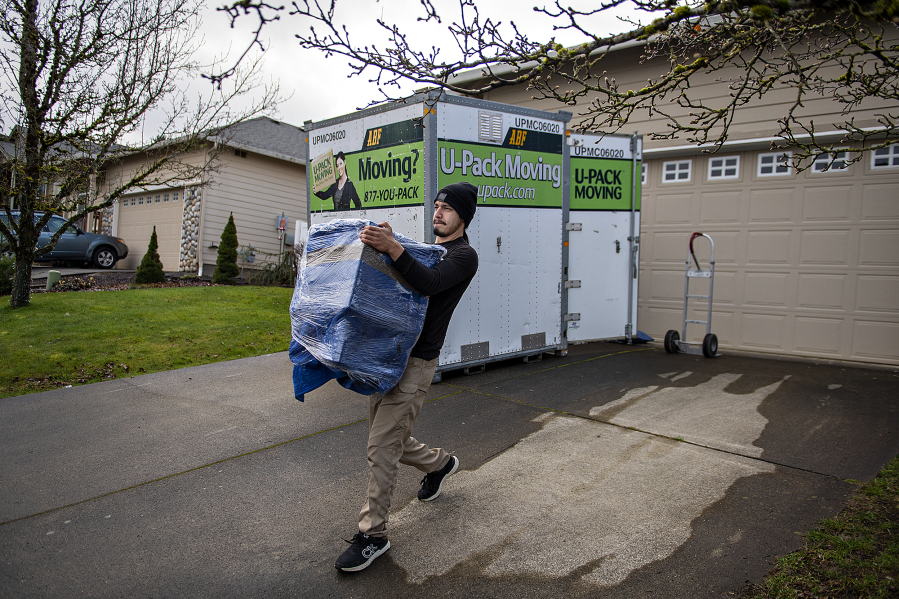It’s widely reported how the rise of remote work during the pandemic freed up many workers to move farther away from their place of employment. Even so, new data shows more Washingtonians than ever stayed put in 2022.
And the number who made short-distance moves dropped significantly.
A record 85% of Washington residents age one and older — about 6.57 million people — lived in the same house in 2022 as they did one year earlier. That represents an increase of around 319,000 non-movers from 2019, when 83% of state residents were in the same house as one year earlier.
The increase in non-movers was seen across most age groups in Washington, but was particularly high among those aged 30 to 44 and those 65 and older.
The rise in the number of non-movers isn’t unique to Washington, although it was more pronounced here than in much of the U.S. Nationally, the number of Americans who lived in the same house from one year earlier increased by eight million between 2019 and 2022, or a change from 86% to 87% of Americans age one and older.
The pandemic didn’t create this trend of staying put, but it did seem to accelerate it. Both nationally and in Washington, there has been a gradual decline in moving over the decades. For example, if you go back to 2000, only around 76% of Washingtonians lived in the same house as one year earlier, according to data from the Census Bureau’s Current Population Survey.
One reason Americans are moving less is our aging population. Younger adults tend to move in far greater numbers than older people. The median age in the U.S. was about 39 in 2022, up about four years from 2000. But even among younger adults, the rate of moving has declined in recent years.
The census data also shows a significant decline in the number of Washingtonians who moved locally. In 2022, around 605,000 state residents had moved within the same county in the past year. That represents a decline of 145,000, or 24%, from 2019, when 750,000 Washingtonians made intra-county moves.
This sharp decline stands out even more because there wasn’t a similar drop in the number of state residents who moved to a different county within Washington in the past year. In 2022, around 226,500 made an inter-county move within the state, effectively unchanged from 2019.
The data also shows the number of state residents who moved to Washington from another state increased modestly, from around 232,000 in 2019 to 248,000 in 2022. (The census data does not include the number of people who left Washington in the past year). Movers to Washington from abroad fell from around 64,000 to 58,000 in this period.
So what can explain the sharp decline in local moves?
We might find an answer by looking at the reasons people move. According to data from the Census Bureau’s Current Population Survey, more than 40% of all moves are because of housing-related reasons — wanting to own rather than rent, wanting a bigger or nicer house, wanting to live in a better neighborhood, wanting lower rent, and so on.
The data also shows housing-related reasons are an even bigger factor behind short-distance moves, accounting for more than half of all intra-county moves in the U.S.
But buying a home instead of renting, or upgrading your current home, became a lot harder to do in the last few years as the pandemic heated up an already hot housing market in Washington and many other parts of the nation.
According to Redfin data, the median home sales price in Washington rose from $418,400 in January 2020 to a high of $654,100 in May 2022. Rents statewide also began to spike at the end of 2020, according to the Washington Center for Real Estate Research.
There may be some other reasons behind the sudden decline in short-distance moves in Washington. For example, local moves are often prompted by marriage or growing families, and both marriage and birthrates are declining. But the remarkable surge in home prices seems like the prime suspect.



